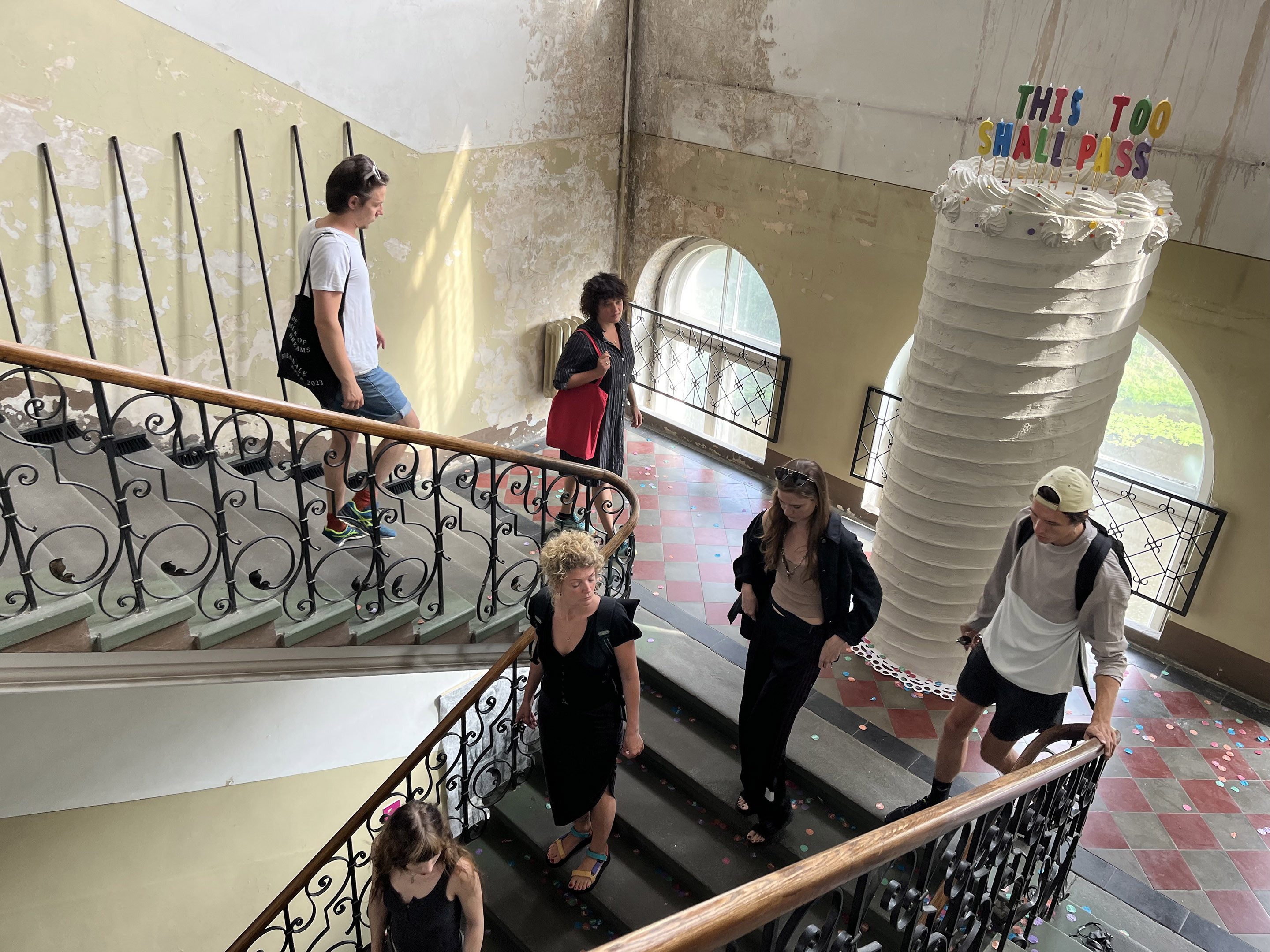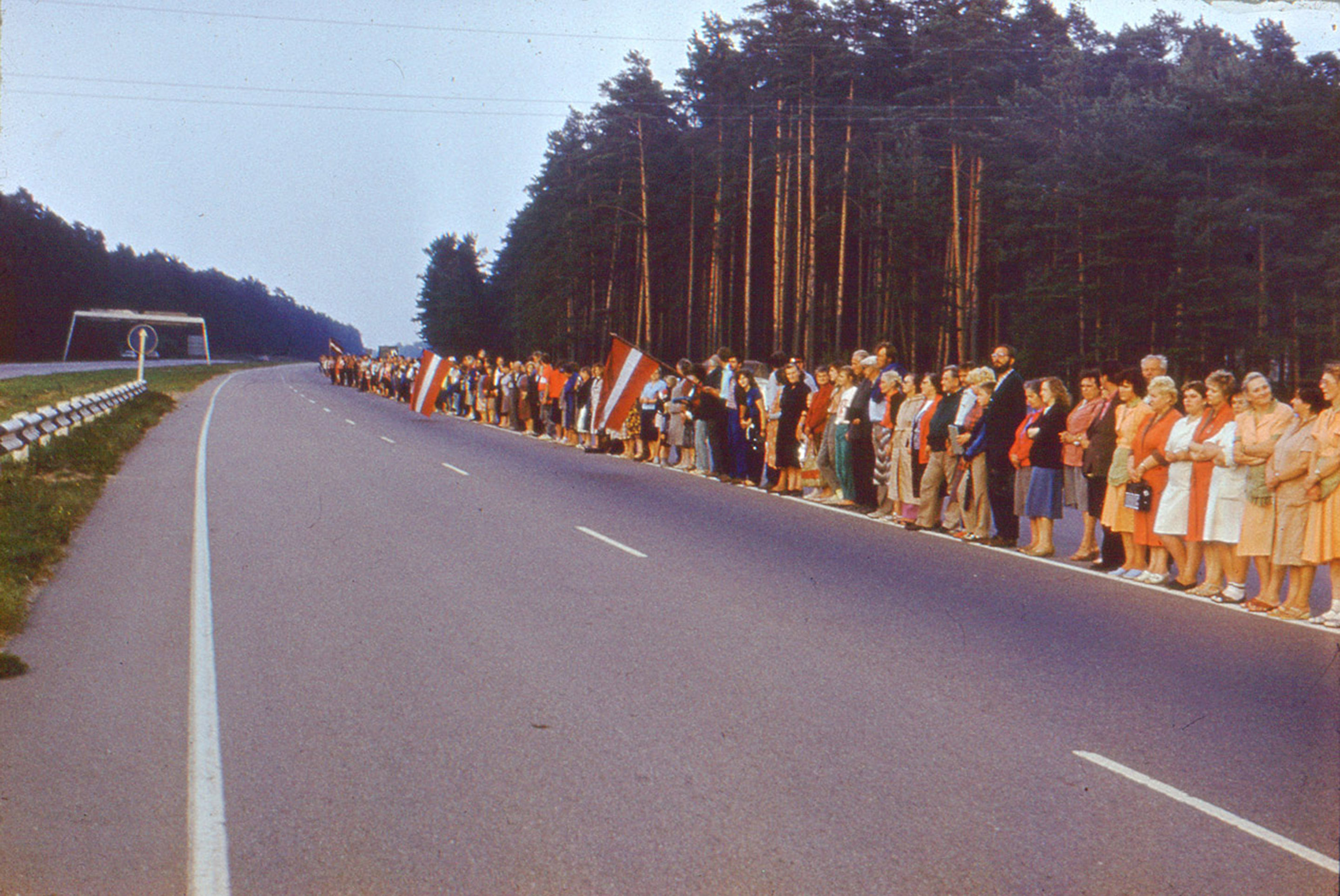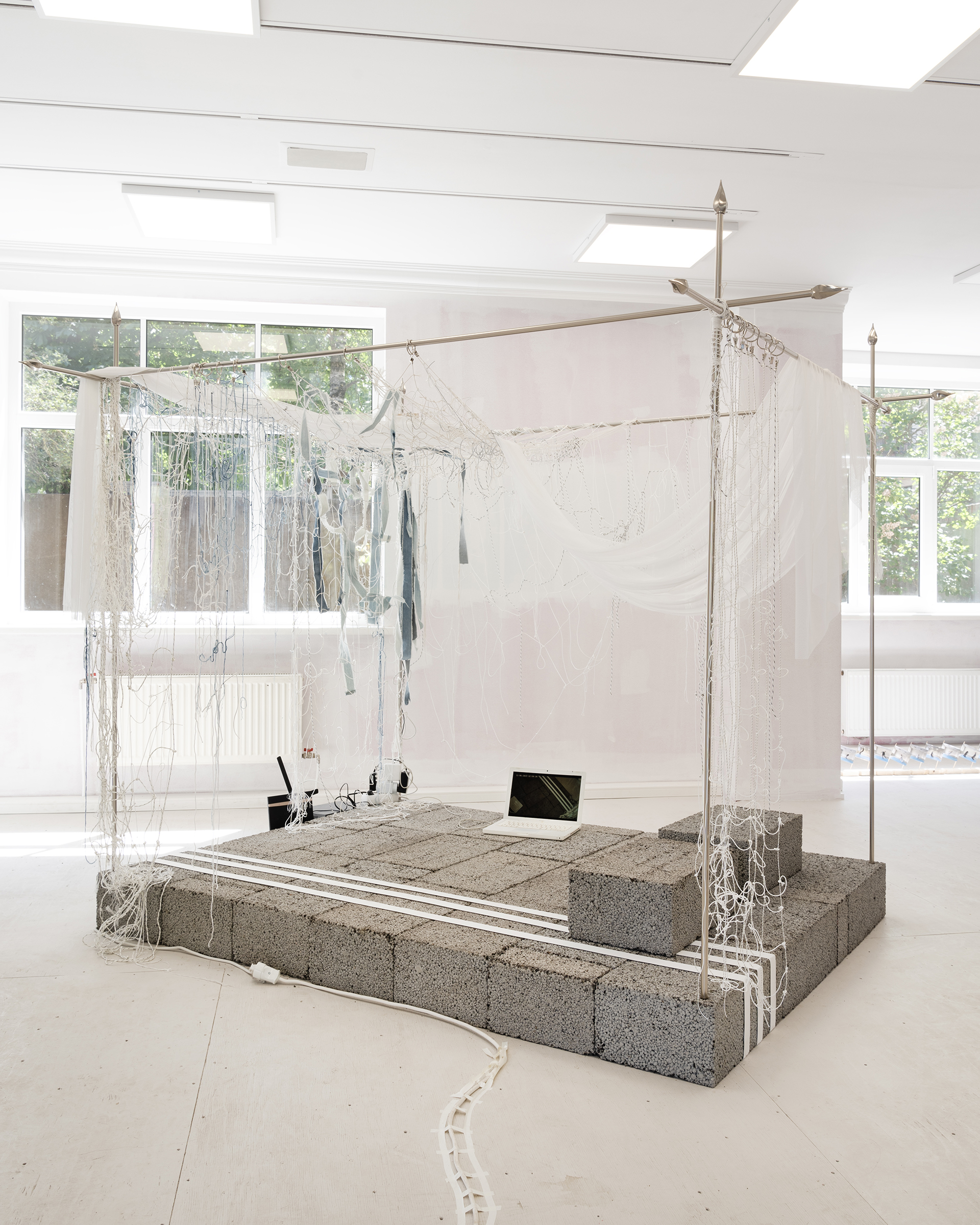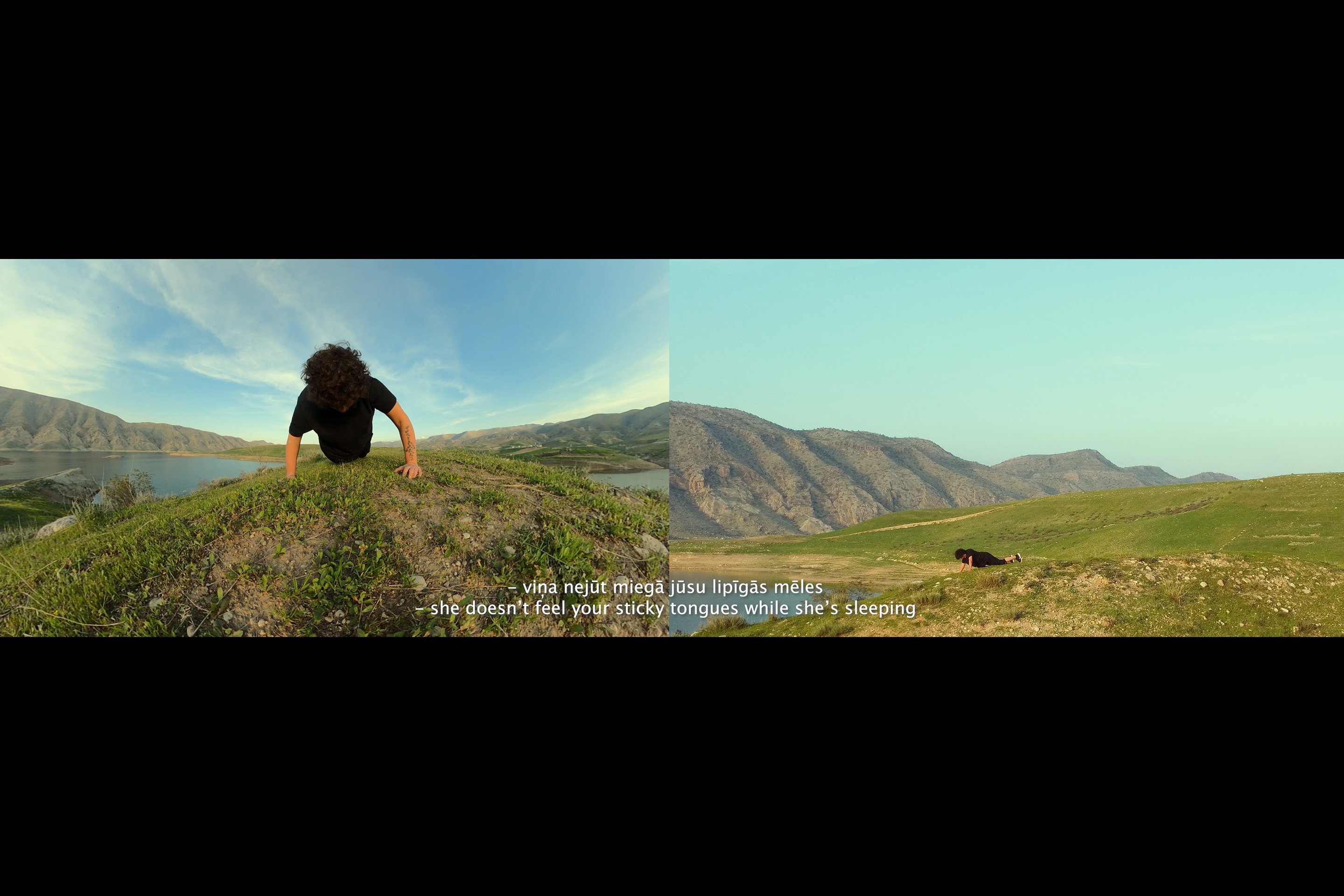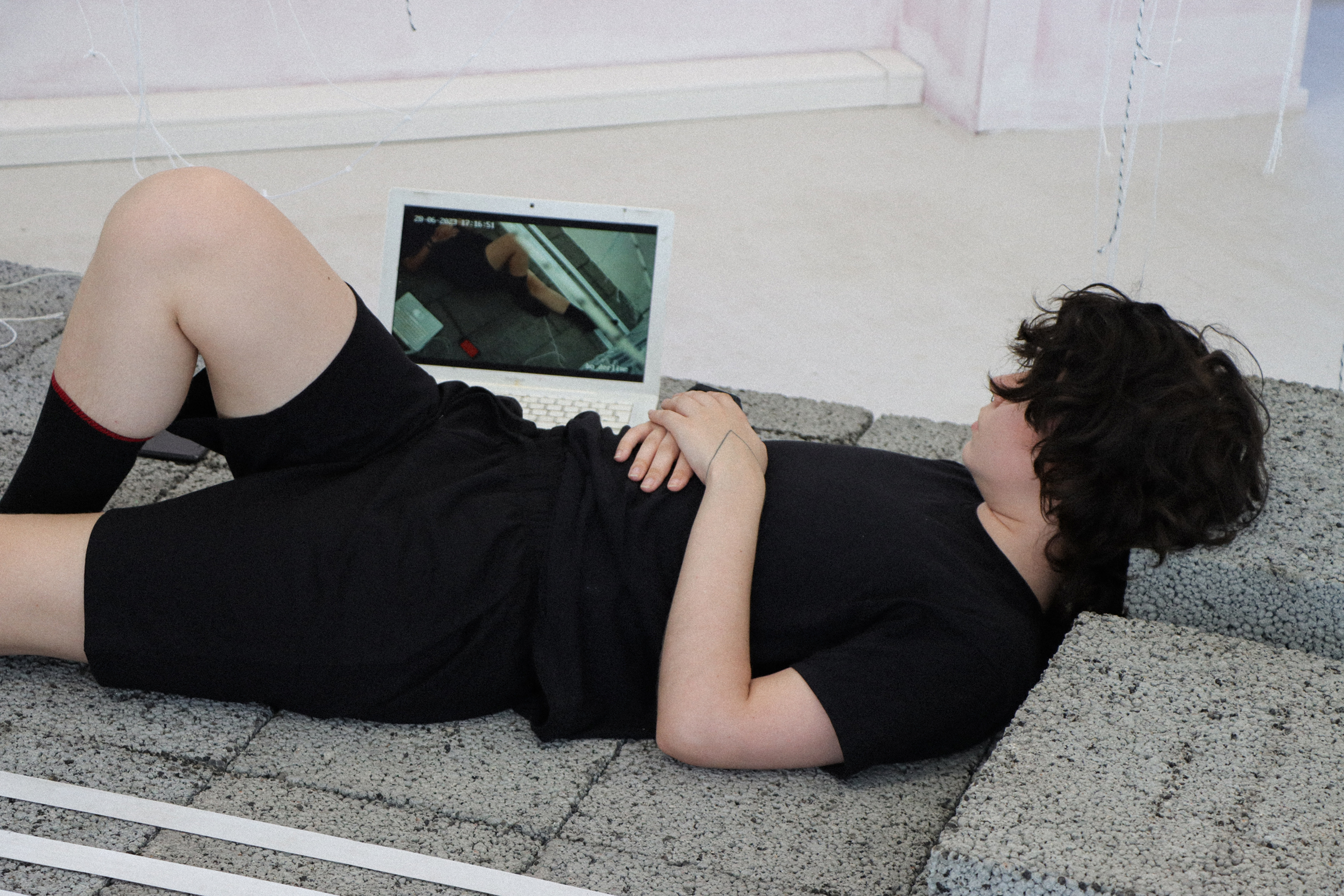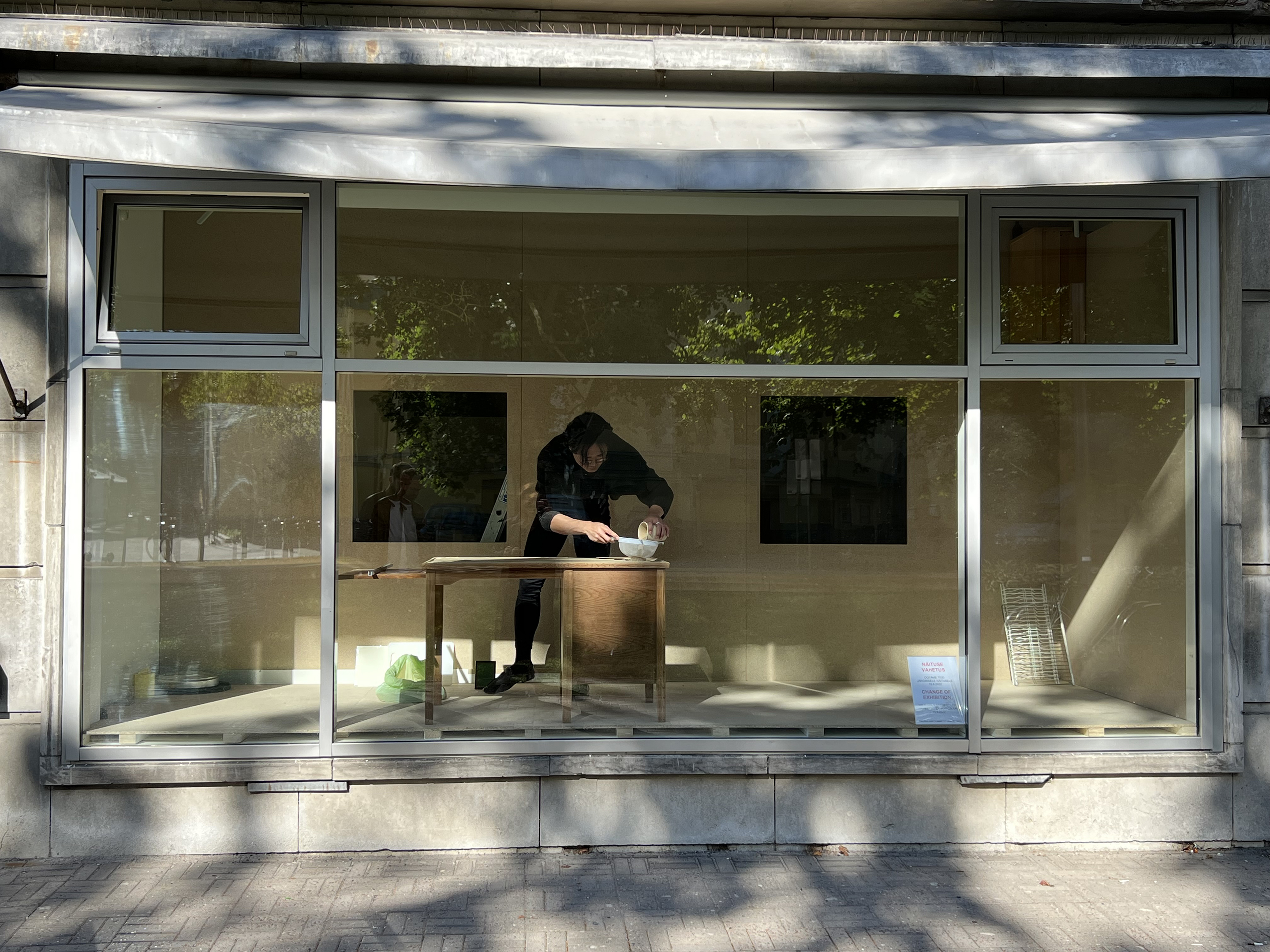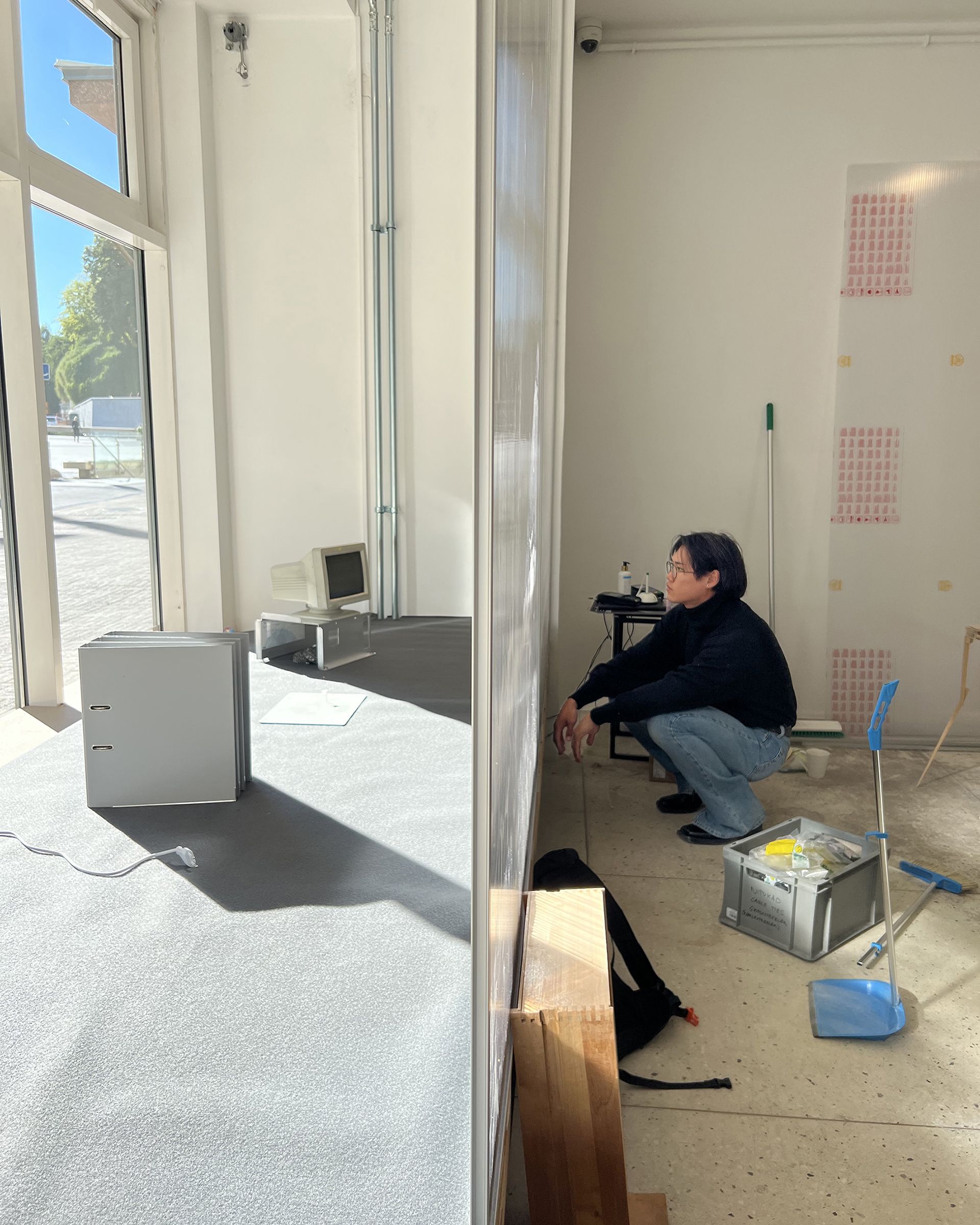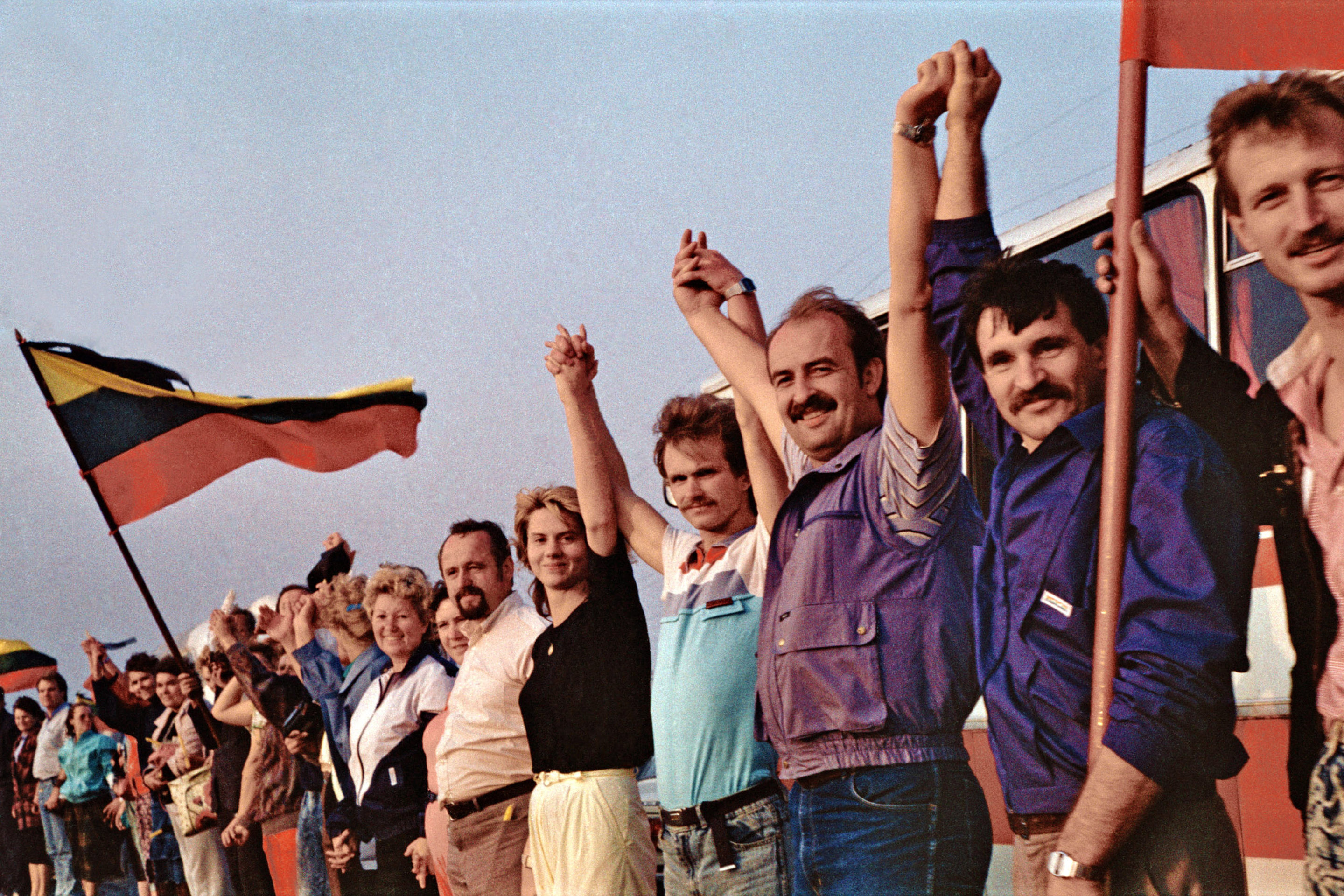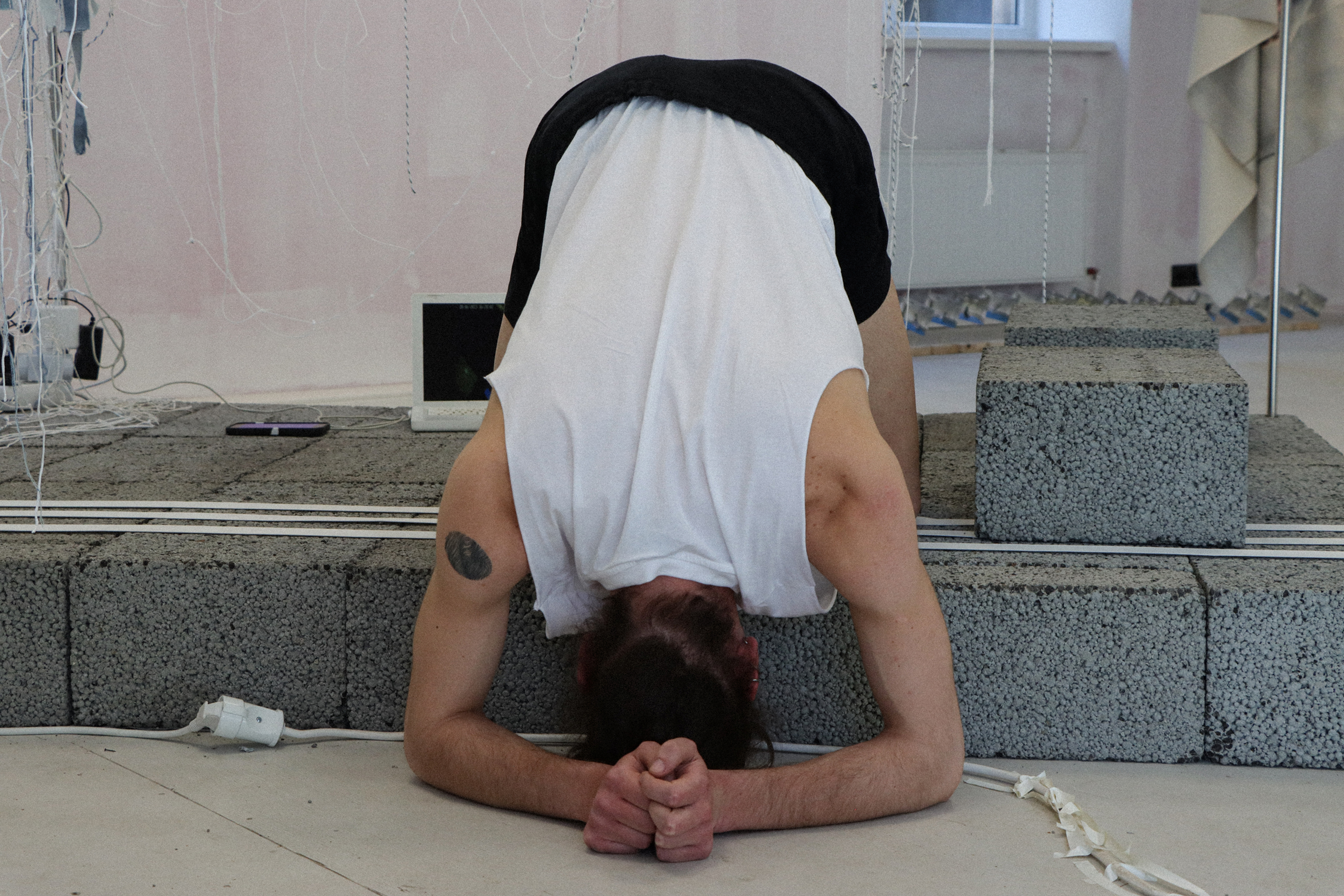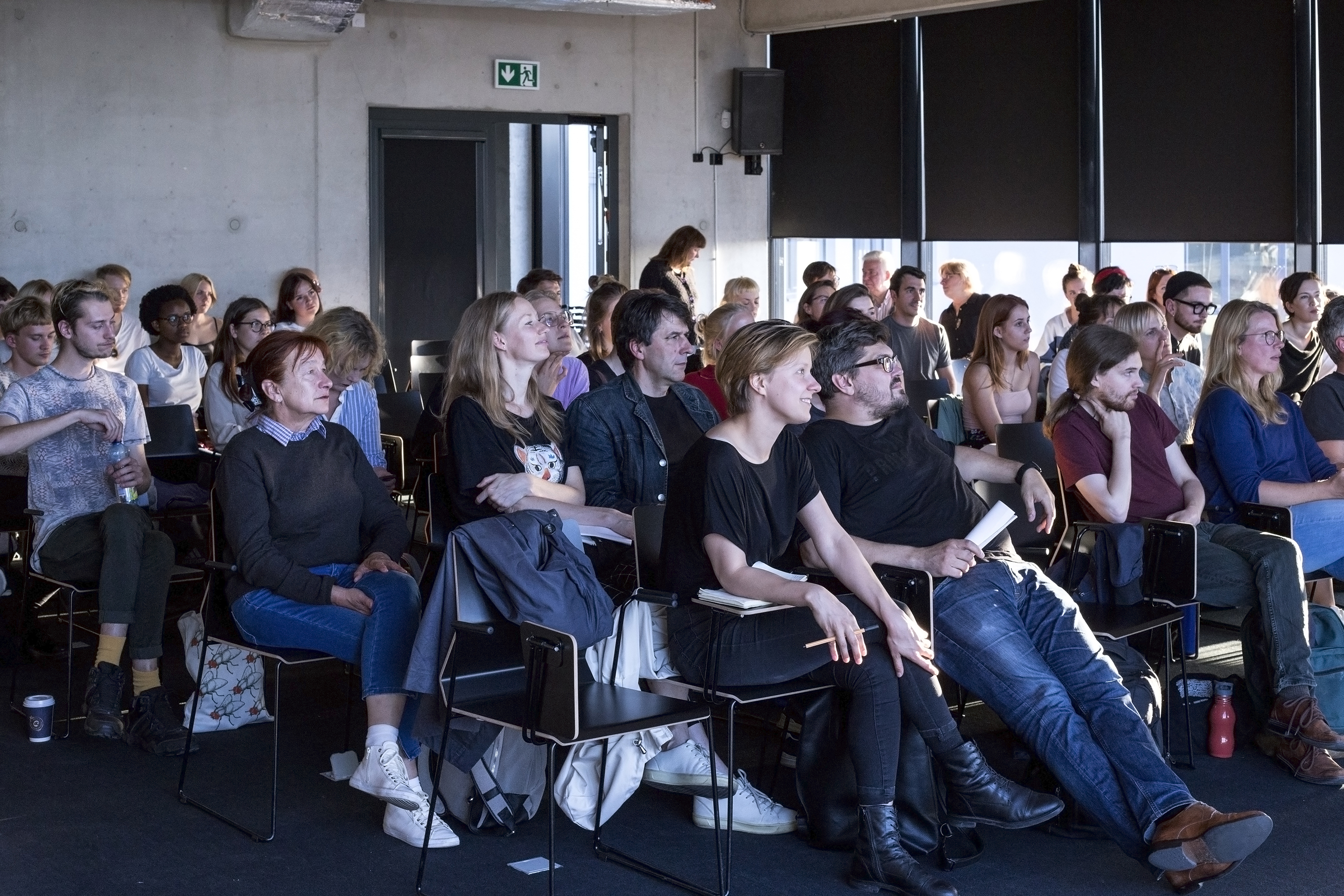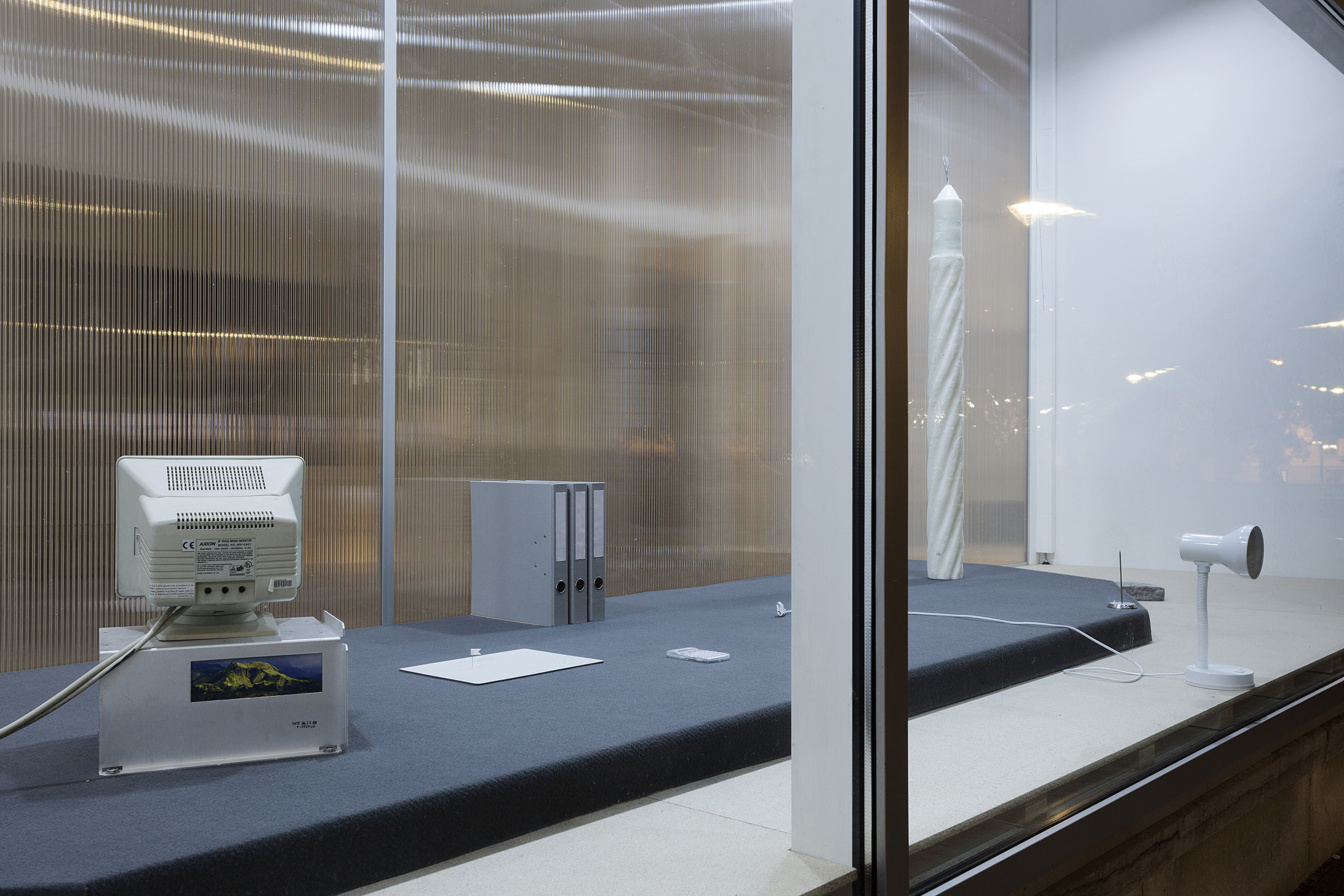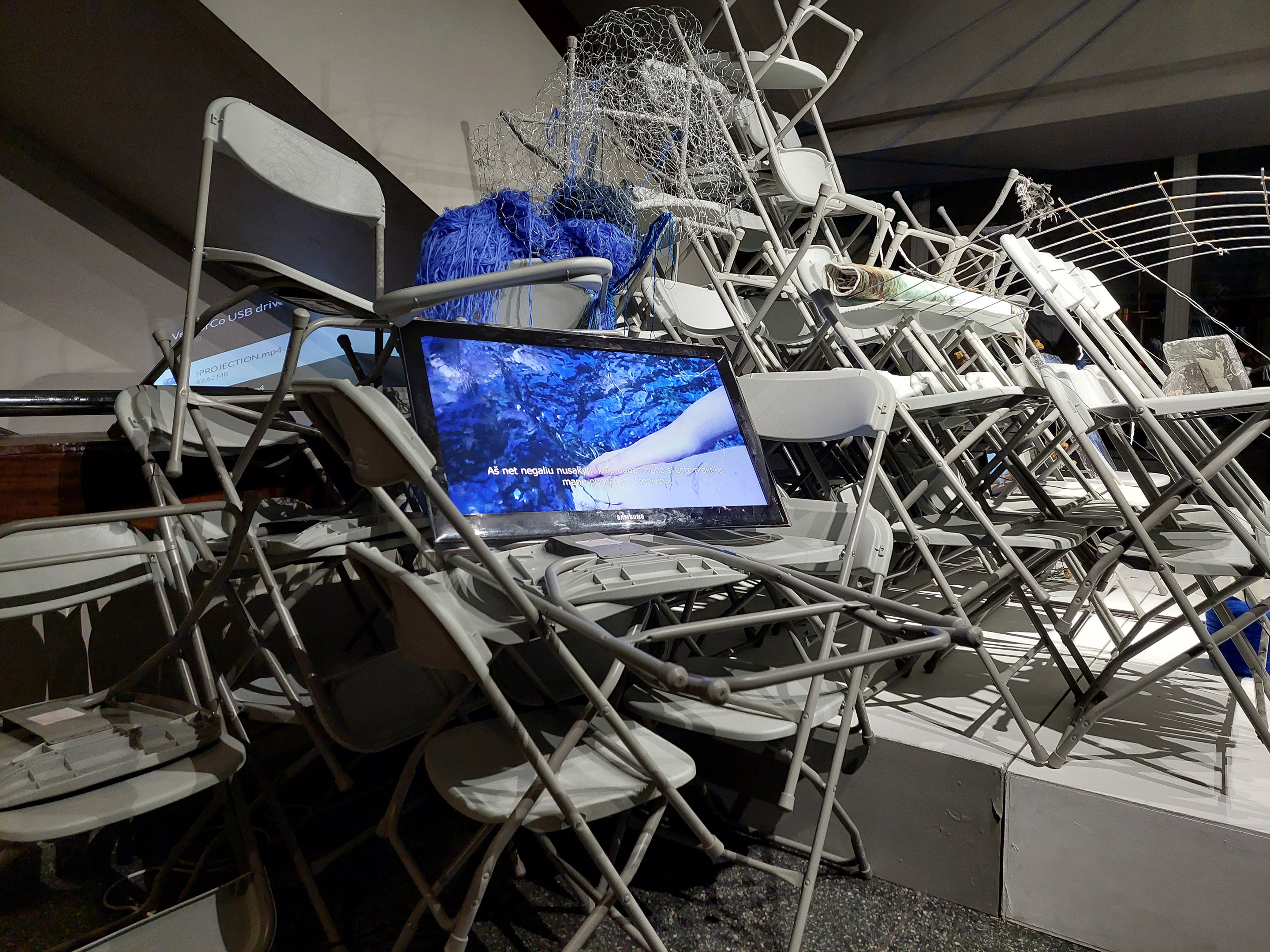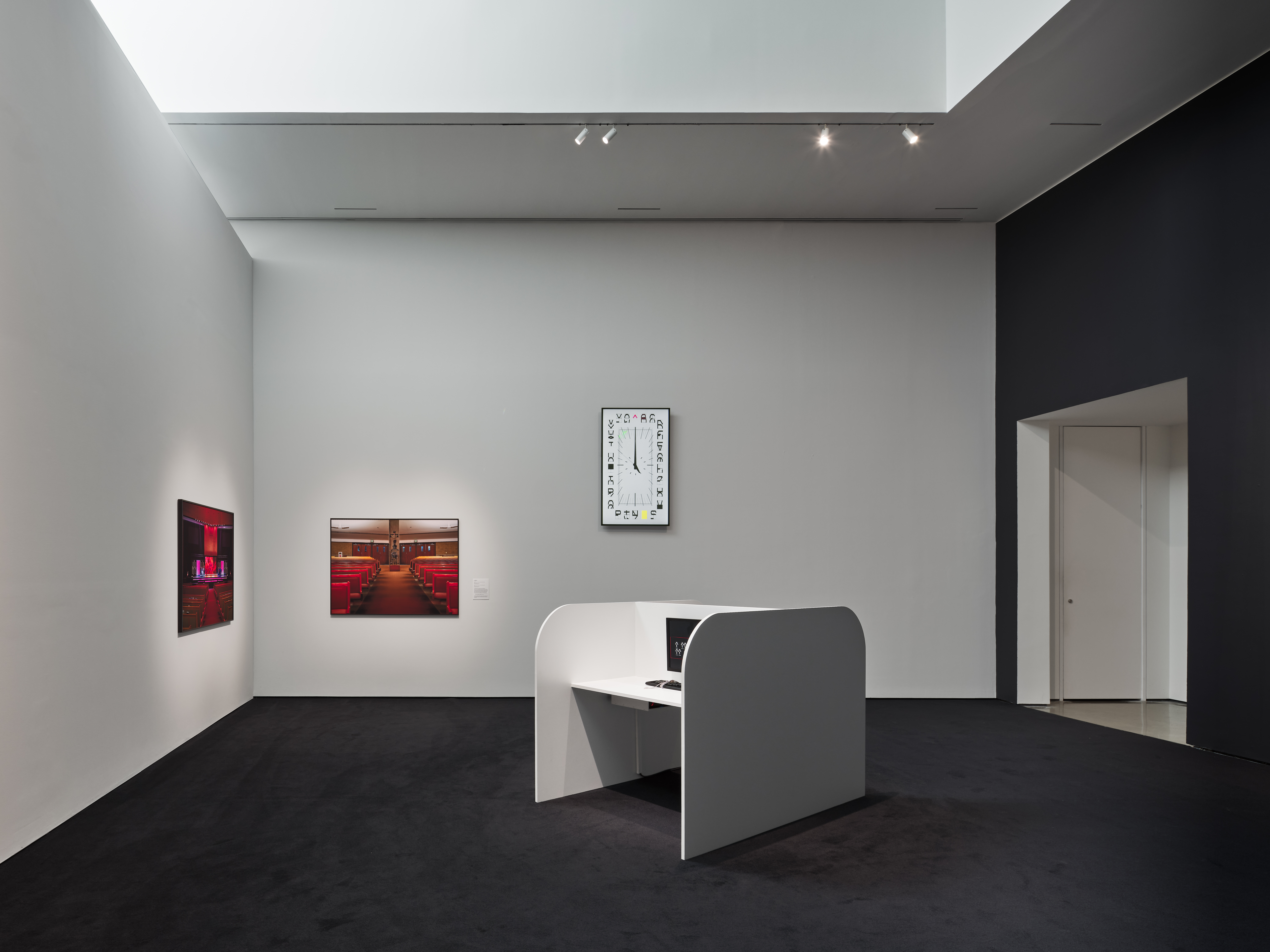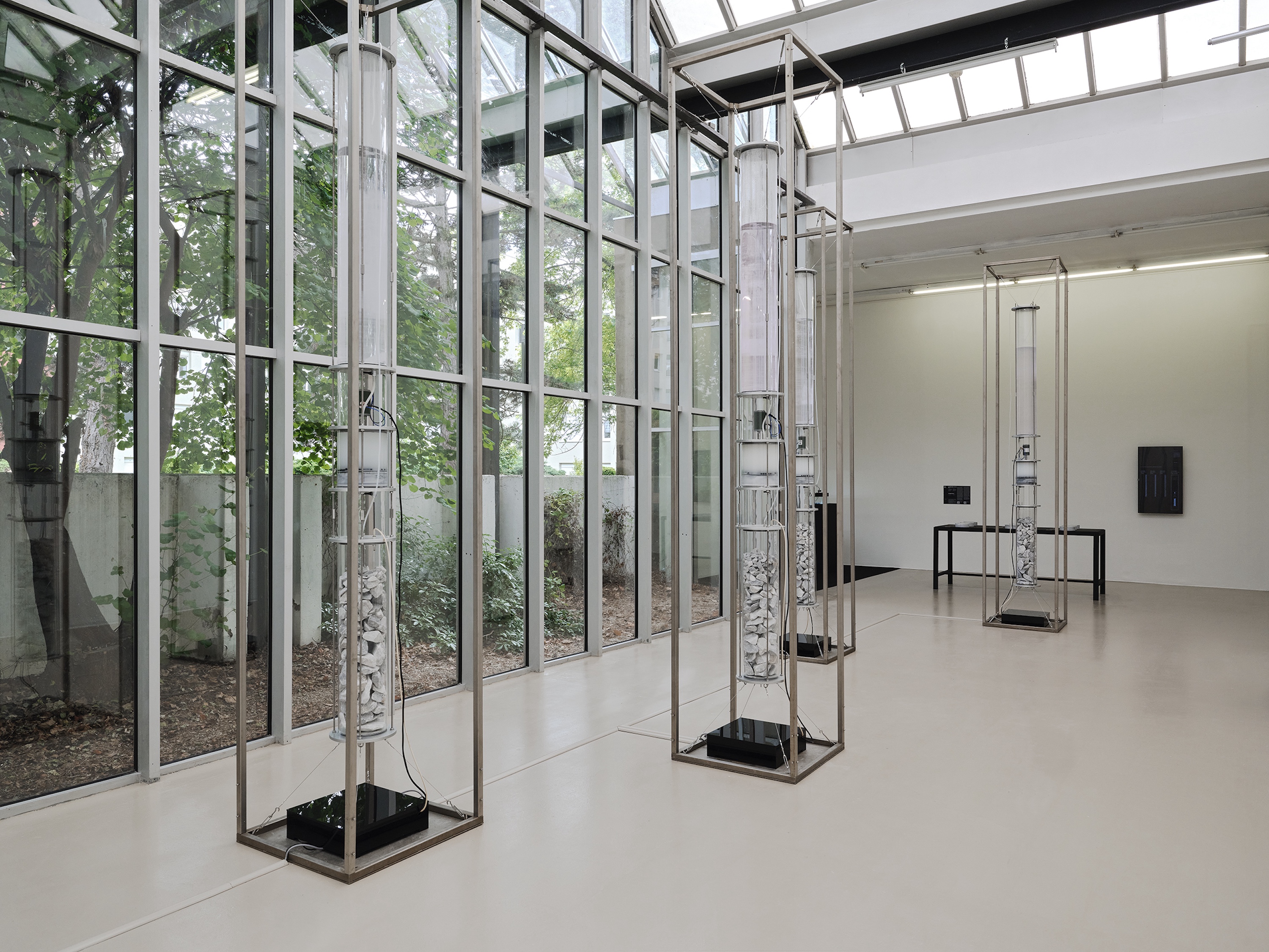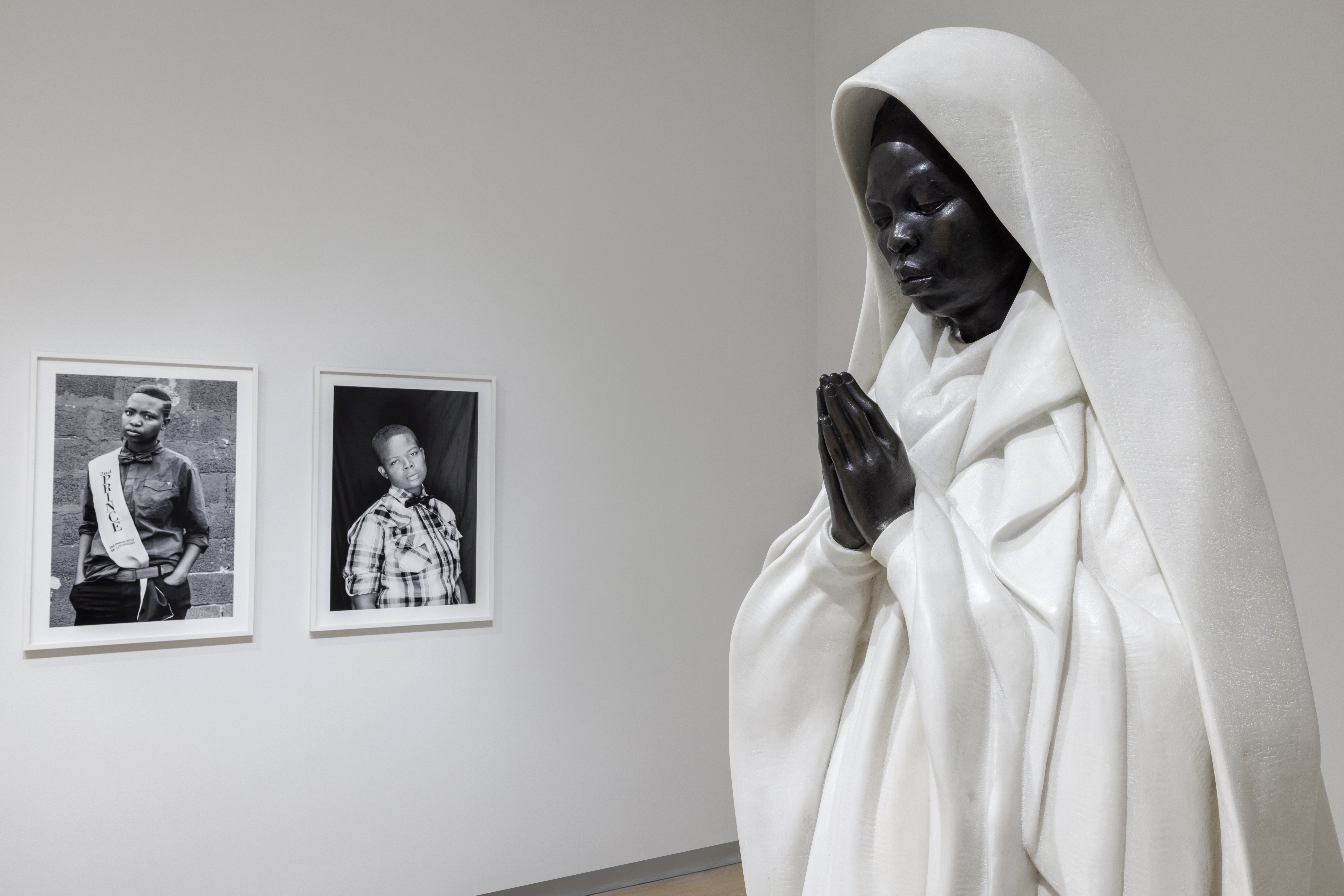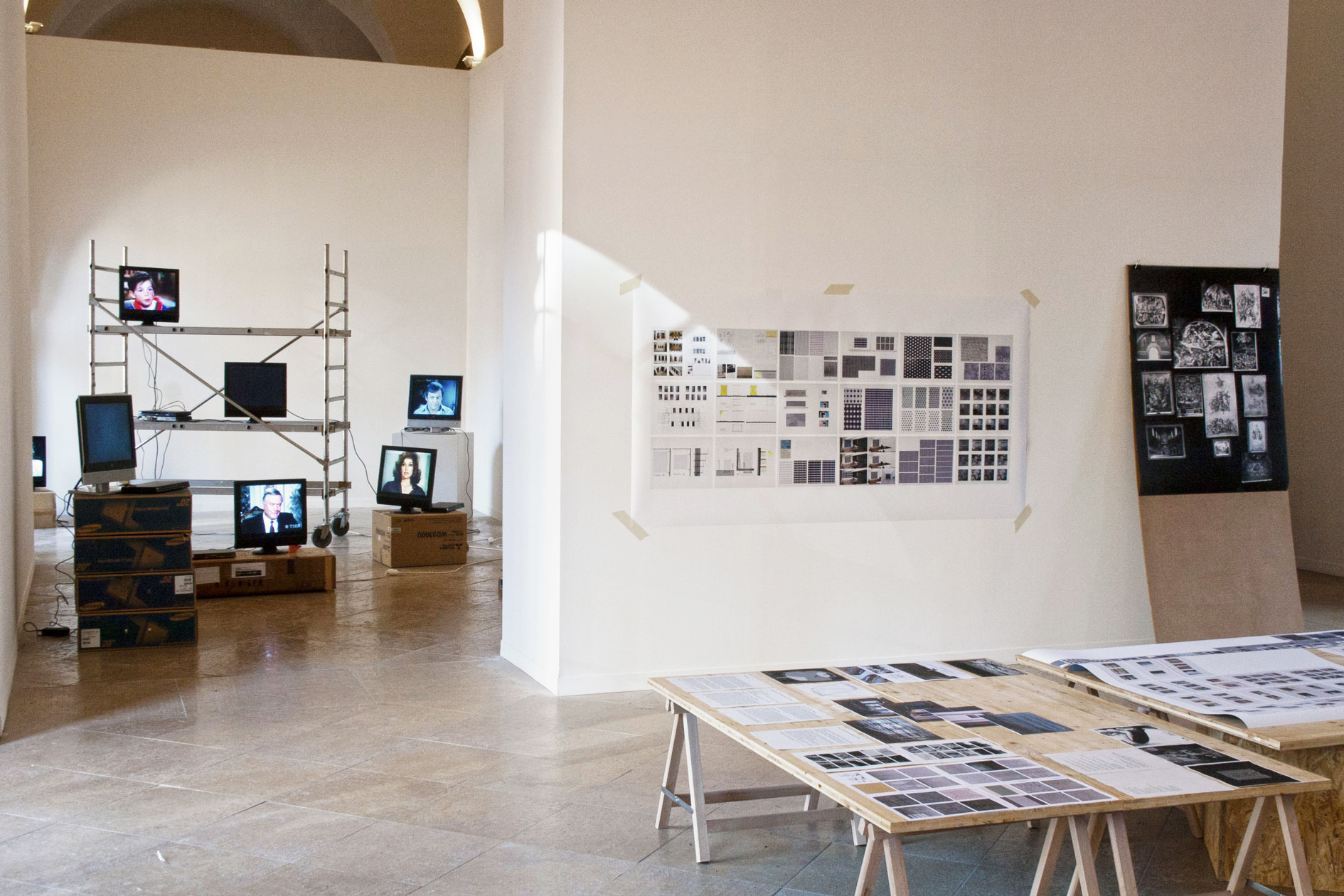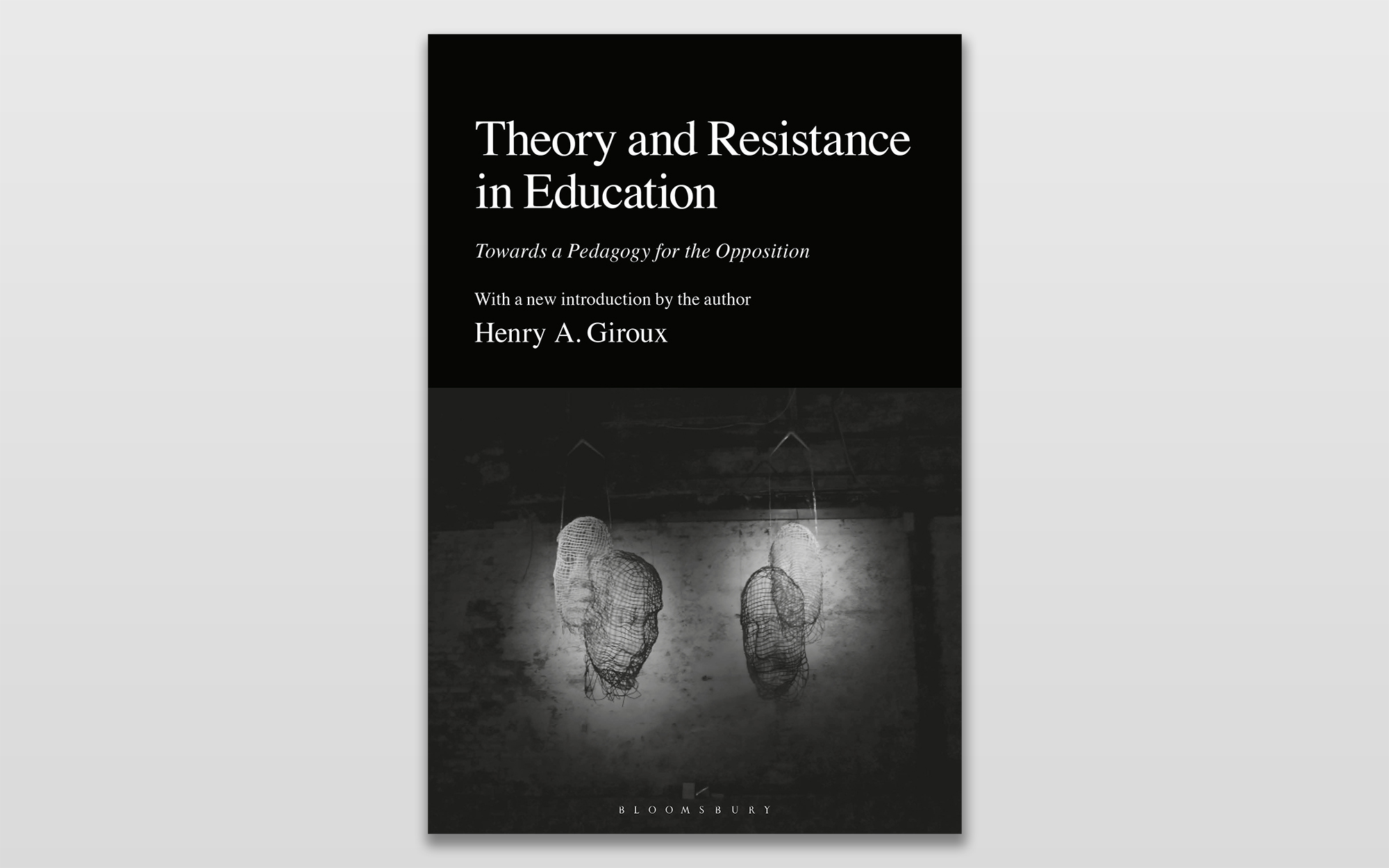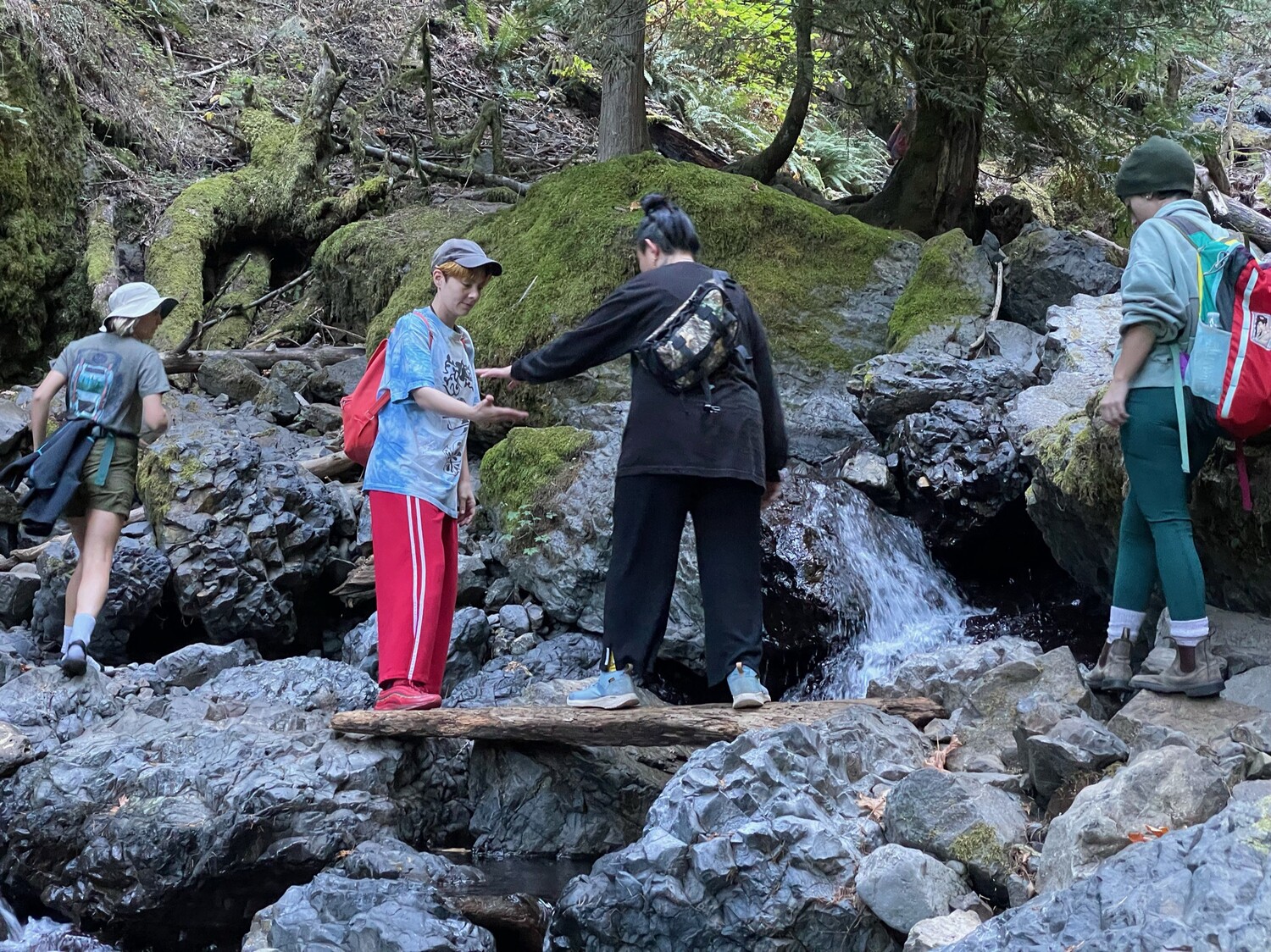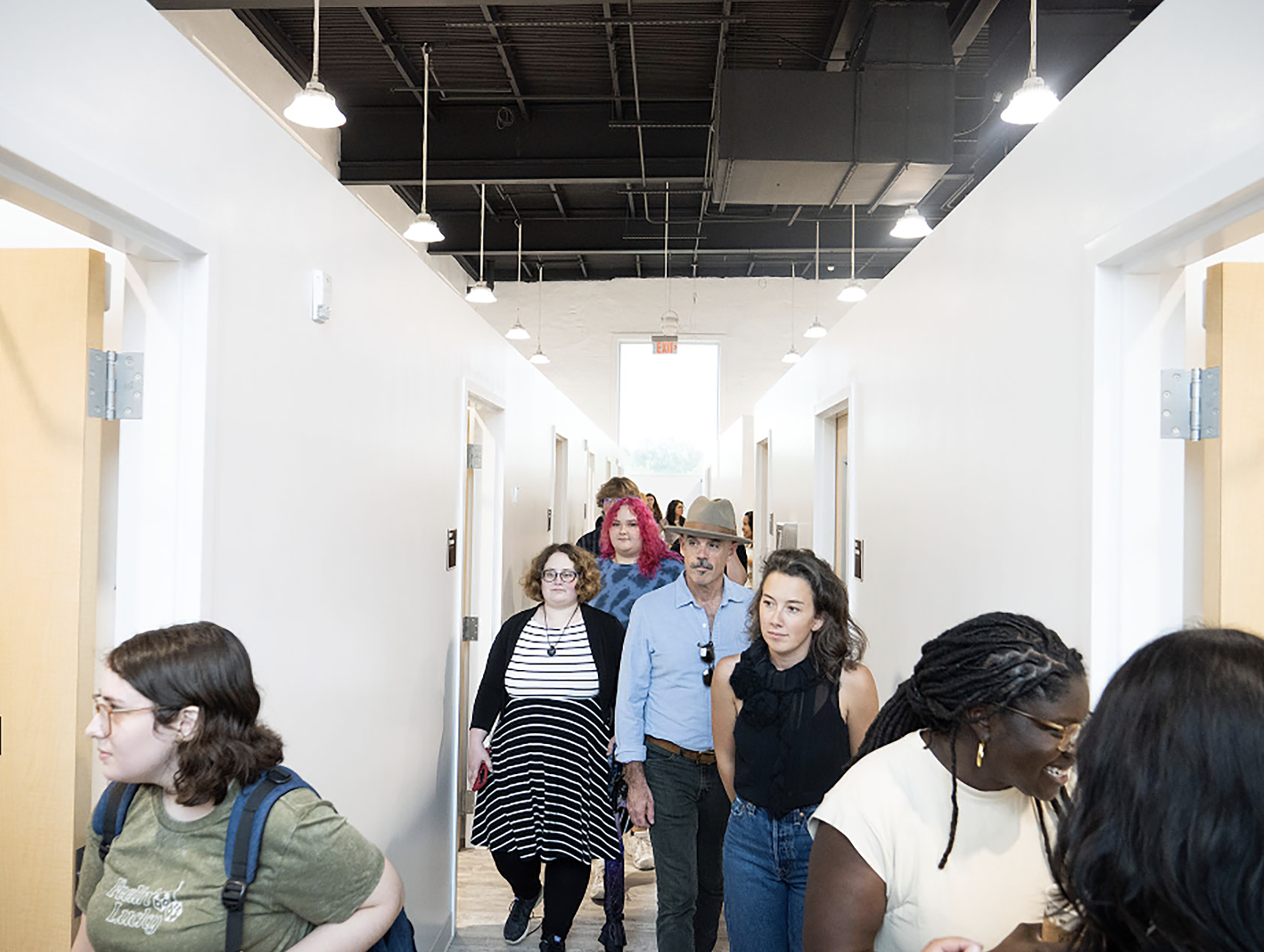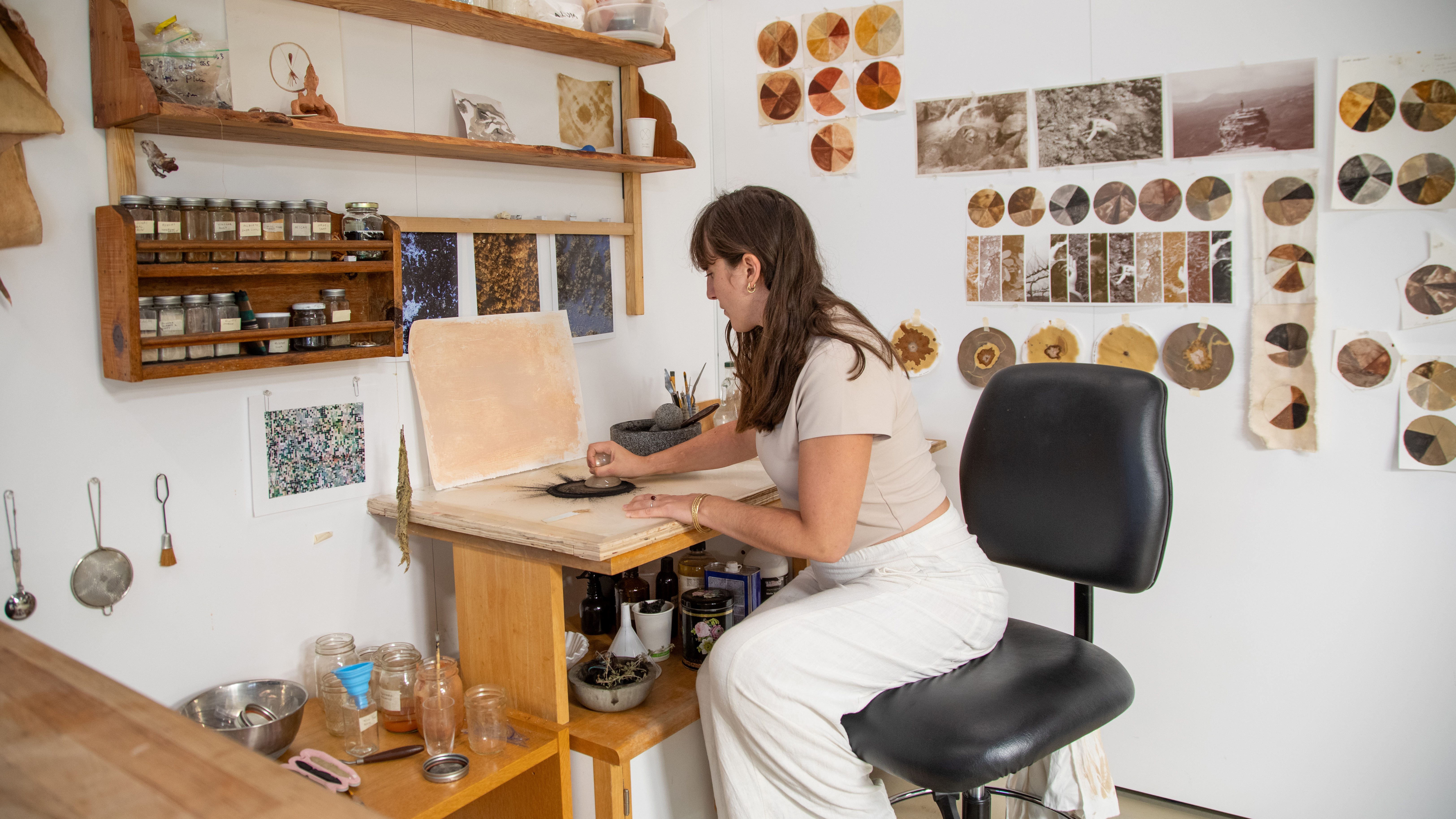In 2019, as I navigated my transition to the Baltics to assume a curatorial role at the Tallinn Art Hall and teach in the art theory and visual culture faculty at the Estonian Art Academy (EKA), these nations observed a significant milestone: the thirtieth anniversary of the Baltic Way, or alternatively, the Baltic Chain. On August 23, 1989, an estimated 1.5 million people formed an unbroken human chain extending over 675 kilometers, from Tallinn, through Riga, to Vilnius. [footnote The Baltic Way, or Baltic Chain, (also Chain of Freedom) in English is referred to in Lithuanian as “Baltijos kelias” (from kelias, “road”), in Latvian as “Baltijas ceļš” (from ceļš, “way”), and in Estonian as “Balti kett” (from kett, “chain”). The Baltic Way was orchestrated by national movements including Estonia’s Rahvarinne, Latvia’s Popular Front, and Lithuania’s Sajūdis. Participants convened in various urban and rural locations, including less-populated regions where the human chain was intended to pass through. See Marju Lauristin and Peeter Vihalemm, “The Political Agenda During Different Periods of Estonian Transformation: External and Internal Factors,” Journal of Baltic Studies 31, no. 1 (Spring 2000): 54–75.] Archival footage of the event records the crowd’s fervor, with participants chanting a common demand for freedom. Integral to the Chain were profound emotional resonances, idealistic and ideological underpinnings, and intense enthusiasm for the post-Soviet future, sentiments reflected in the transformative shift that began to reshape the educational sectors of the Baltic states around 1987. Early books and articles on perestroika concentrate mainly on economic processes and view glasnost as a step toward economic reconstruction, its political precondition. For half a century, from 1940 to 1991, Estonia, Lithuania, and Latvia were occupied and then colonized by the Soviet Union, a period that firmly imprinted itself on these nations’ geopolitical and economic sectors of these nations. [footnote See Epp Annus, “The Problem of Soviet Colonialism in the Baltics,” Journal of Baltic Studies 43, no. 1 (2012): 21–45, and Ewa Thompson, “Postcolonial Russia,” in A Historical Companion to Postcolonial Literatures: Continental Europe and Its Empires (Edinburgh: Edinburgh University Press, 2008), 412–17. I specifically refer to “Soviet colonialism,” a subset of “Russian colonialism.” This terminological distinction intends to focus on the Soviet era, avoiding the broader and more complex history of Russia’s territorial annexations.] But the centralized Soviet educational system too determined how these states operated, and democratization, cultural rebirth, and educational reform were equally important concerns guiding Latvia, Lithuania, and Estonia’s post-Soviet transition.
Reflecting on this pivotal moment, I find myself contemplating a question of metaphor: did the 1989 event symbolize a “way,” a path toward liberation, or was it a “chain,” an indissoluble link tying individuals together in their collective quest for a common destiny? More than three decades on, the answer, it seems, incorporates both elements. The Baltic Way stands as an enduring testament to the people’s aspiration for freedom and self-determination and also highlights the interconnectedness of their hopeful speculation and collective ambition.
Under Soviet rule, artistic expression and education was tightly controlled, but Baltic artists ingeniously leveraged local humor, subtleties, and nuances to preserve their distinct national identities. The post-Soviet period brought a newfound autonomy of artistic expression, initiating a period of recalibration in which artists sought to redefine their creative identities in alignment with their specific cultural heritages while grappling with the recent past. Education was subject to the same seismic changes that defined post-Soviet life broadly, and by and large, the reformation processes in Estonia, Latvia, and Lithuania bore certain resemblances. [footnote The active phase of educational reformation and decolonization in Estonia began in 1987, while in Lithuania and Latvia, it commenced in 1988. See Marju Lauristin and Peeter Vihalemm, “Recent Historical Developments in Estonia: Three Stages of Transition (1987–1997),” in Return to the Western World: Cultural and Political Perspectives on the Estonian Post-Communist Transition, eds. Marju Lauristin and Peeter Vihalemm, (Tartu: Tartu University Press, 1997), 73–126, and Ramutē Bruzgelevičienė, “Lietuvos švietimo kūrimas 1988–1997” (“Creation of education in Lithuania 1988–1997”) (Vilnius: Sapnų Sala, 2008), 84–85.] Parties in each country considered education, particularly instruction in the local language, as a crucial element in their paths toward independence and national identity establishment. [footnote See Ben Eklof, Larry E. Holmes, and Vera Kaplan, eds. Educational Reform in Post-Soviet Russia: Legacies and Prospects (London: Routledge, 2005).] Gregor Taul, my colleague at the Estonian Art Academy, recently highlighted this concept to me and noted its present evolution: “In Estonian, Latvian, and Lithuanian cultures, identity is rooted in language; it holds precedence. Teaching is done in English primarily now, although we have the curriculum in Estonian; daily, it is practiced in English. The world perhaps needs more instruction in these national languages.” [footnote Interview conducted with Gregor Taul, July 2023.]
The uncertainty, anticipation, and ambition of the post-Soviet period have resurfaced in the networked and globalized present, as the Baltic nations have been integrated into the European Union and technologically connected to the wider world. In a previous feature for e-flux Education published in March 2022, I delved into the workings of POST, a cross-disciplinary program launched in 2021 at the Latvian Academy of Art in Riga. POST aims to foster democratic aesthetics and politics through artistic and educational platforms and, through the instruction of individuals from a range of creative fields, encourages social reflection and critique of both Eastern and Western educational models. This earlier text highlighted how POST’s main faculty, primarily educated in Latvia and Western Europe, have navigated the considerable social changes ensuing from the collapse of the Soviet Union and later joining the EU. My experiences over the past four years, serving as a guest lecturer at the Art Academy of Latvia (LMA) and the Estonian Academy of Arts (EKA) and collaborating with the Vilnius Art Academy in Lithuania (VDA), have stimulated a broader investigation into the evolving roles of art and education within the Baltic region. As these states transitioned from being territories under Soviet authoritarianism to autonomous entities within the European Union, a digital revolution unfolded, catalyzing critical thought on the collision between analogue and digital realms. This questioning is particularly relevant to the current younger generation of artists and thinkers, whose worldview has been defined by screen-mediated realities. In this context, art and education emerge as essential conduits for challenging ingrained social norms and generating discourses that envisage potential alternatives for future societal structures. The complex regional dynamics are further intensified by escalating hostility, ongoing conflict, and persistent threats of territorial encroachment from Putin’s Russia, complications exacerbated by the invasion of Ukraine. In the Baltics, education reform is not merely a bureaucratic process but rather a channel for protest and an ideological environment in which societal paradigms are debated, challenged, and often reimagined.
Visualizing Change and Narratives of Evolution
Within the evolving narrative of Baltic transformation, the recent works of Madara Gruntmane-Dujana and Krišjānis Elviks, both MA graduates of the POST program, bear poignant testimony to the complexities of Baltic identity today and the region’s progress from colonization to liberation. Their respective pieces Afterlove and Borderline: A Quest for Inclusion, created for the 2023 thesis exhibition “Breaststroke, Backstroke, Butterfly,” which I coorganized at Skolas 18 in Riga, echo the many tensions and contradictions of the region while also showcasing their influence on artmaking.
Gruntmane’s cinematic work, Afterlove, crisscrosses the metaphysical realm, presenting individual human experiences within an overarching narrative of social metamorphosis. The film proposes an interpretation of the afterlife not as a distinct plane of existence but as a state of living without fully embracing the opportunities of life, often due to accumulated traumas. Set near the city of Mardin, in southeastern Turkey, between the basins of the Tigris and Euphrates rivers—a historical intersection of Western Asia and Europe—the film evokes shared human experiences of the afterlife and the concept of purgatory. Much like the Baltic Way, it affirms that transformation is a process of evolution, not a destination. Conversely, Borderline: A Quest for Inclusion, Elviks’s installation and performance work, engages with post-Soviet identity, paralleling the Baltic region’s shift from cultures of control and surveillance to greater, if somewhat still limited, social inclusion. The bed, the central motif of his work, symbolizes both sanctuary and confinement, providing a potent reminder of the region’s history and quest for self-determination. Notably, Elviks’s work foregrounds the narratives of Riga’s marginalized queer community, positioning their ongoing struggle for liberation within public view. [footnote See Kārlis Vērdiņš and Jānis Ozoliņš, “The Latvian LGBT movement and narratives of normalization,” LGBTQ+ Activism in Central and Eastern Europe: Resistance, Representation and Identity (2020): 239–264.] These works evince the transformative potential of art education—exemplified by the POST program—by illustrating how historical, social, and cultural concerns can influence the development of contemporary art from the region.
However, being made within the context of POST, these expansive and critical works reveal significant infrastructural challenges confronting the region’s emerging artists. Despite their creative fervor, artists here have few resources and relatively little institutional support, suggesting an entrenched underestimation of contemporary art practice. For example, the lack of dedicated contemporary art venues, such as a museum in Riga (with the Arsenāls Exhibition Hall remaining closed for reconstruction since 2020), exacerbates these constraints, despite the resilience of several local nonprofit galleries. Notably, to address this institutional void, the Estonian art scene has ingeniously established a museum within an abandoned structure, repurposing a deserted seaside office building into the artist-run creative space EKKM, the Contemporary Art Museum of Estonia.
The competition for financial support often drives artists to seek paid employment, diluting the individual time and energy that would otherwise go to maturing artistic practices. Glimmers of hope are present in initiatives such as the Erasmus and KUNO programs at the three academies and the Academia Award, recently established at the academy in Riga, which offer graduates opportunities for further development and supportive collaborations with institutions of higher learning in the Baltics. [footnote Erasmus is the European Union’s initiative to bolster education, training, youth engagement, and sports within Europe. KUNO, an ambitious network within the Nordplus framework, unites eighteen fine art academies from the Nordic–Baltic region. Its vision is to evolve into an art university without physical barriers. Through the collaboration on numerous project activities, the participating institutions dedicate themselves to the persistent advancement of higher fine art education in this region.] These opportunities, however, are the few means of material support for young artists. Existing artist grants and salaries primarily benefit established and mid-career artists, leaving emerging practitioners on the margins, and consequently, a significant gap exists between the resources of the academic programs and the stark reality its graduates confront, indicating an urgent need for systemic rectification.
Although the transition from the academic to the professional sphere is a challenge confronted by students-artists globally, the situation within the Baltic region is arguably one of the most daunting in Europe, given the lack of a robust network of art galleries, biennials, and prizes. [footnote The forthcoming Riga International Biennial of Contemporary Art (RIBOCA) was cancelled, a decision significantly swayed by the current Russia–Ukraine war. Initially planned for August 2023, this cancellation follows a previous deferral by a year and controversies concerning the heritage of its executive team—with Russian, Lithuanian, and Latvian origins—and the financing of the biennale. The Baltic States, notably, do not host an art prize of international renown, comparable to Ukraine’s Pinchuk Art Prize. The Köler Prize and the Purvītis Prize, respective national art awards of Estonia and Latvia, remain largely obscure to international audiences.] Additionally, there is a noticeable absence of substantial incentives for patrons seeking to bolster the arts, like tax breaks, and cultural endowment funds within the Baltics are chronically under-resourced. Significantly, the Baltic Culture Fund, which fosters one-off Estonian, Latvian, and Lithuanian joint cultural projects, explicitly prioritizes international exposure over intraregional collaboration. [footnote The Baltic Culture Fund is spread across numerous art disciplines, including architecture, visual art, sound art, performing arts, and interdisciplinary projects. It supports new, one-off cultural events outside the Baltic countries that foster international visibility of Baltic culture. Support from this fund is specifically earmarked for presentations in venues outside the Baltics, emphasizing the internationalization of Baltic culture rather than fostering artistic collaborations within the region.] Despite, or perhaps thanks to, these obstacles in the region’s art and educational environments, local artists, educators, and students have recently persevered to mobilize collective resources. This approach to supporting artists materially offers a hopeful vision within the ongoing narrative of educational reforms and signals an active grassroots community that not only is prepared for but also passionately advocates for transformative change. The concerted resolve of these stakeholders fuels their continued survival and is instrumental in shaping the future trajectory of artistic and educational practices within the region.
What Makes Another Curriculum Possible?
Looking back on the beginning of my lectureship at the Estonian Art Academy in 2019, local circumstances appear far more complex than initially discerned. Invited by the Centre for General Theory Subjects and the Master for Contemporary Art program (MACA), my task was to synthesize my experiences as a curator and author into a pedagogical framework capable of engaging both Estonian and international academic communities and to advise current students in their work and their career prospects post-graduation. MACA was conceived in 2017 as an expansive platform for students seeking to broaden their intellectual horizons, refine their critical thinking, and, importantly, foster active dialogues with their peers, as well as with global art professionals. The program provides various resources, including personalized tutoring for artists, a stimulating milieu for discourse on contemporary art and social dynamics, and access to professional studios for sound art, sculpture, painting, and graphic art. Additionally, the program facilitates collaborations with international artists, curators, theorists, activists, philosophers, and gallerists.
After a decade working in the educational and professional milieu of the United States, a dialogue-driven curriculum geared to Baltic artists began to emerge, crystallizing into a series of probing and dynamic conversations that bridged the specificity of the Estonian context with the multifaceted global cultural art scene. Positioned within the intellectual contours of my recent book with Nato Thompson, Making Another World Possible, I sought to critically explore how the ideologies and methodologies of socially engaged art could be translated and realized within the Estonian context. [footnote Corina L. Apostol and Nato Thompson, eds., Making Another World Possible: 10 Creative Time Summits, 10 Global Issues, 100 Art Projects (London: Routledge, 2019).] This exploration also prompted further reflection: can art education, as a microcosm of broader societal influences, serve as a vehicle for social change, and if so, what measures must be taken to actualize this potential? The resultant dialogues with multidisciplinary experts, such as “Arts, Politics, and Engagement” and “Classroom in Crisis,” examined sociopolitical transformations and friction points that have shaped socially engaged art and creative education over the past decade and articulated the current stakes of and potential emancipatory strategies within creative education. These discourses were conducted against a backdrop of commercial demands for “creative” subjectivities and limited public resources. A critical question lay in how art can sustain its potential to illuminate our processes of “becoming” and the conditions surrounding our creative practices, all while resisting the pressures of the market.
Reflecting on this dialogue-driven pedagogical approach from a post-pandemic perspective, compounded by the force of geopolitical conflicts, I am prompted to consider what future we envisage for art education amid challenges that constrain our graduates’ growth. These challenges remind us of the resilience embodied in the spirit of 1989 that is now returning, compelling us to question how academia can cultivate resilience amid diminishing state funding and the siren call of the commercial art world. As we seek to nurture a vibrant, inclusive, and resilient artistic ecosystem in the Baltics, what lessons can we learn from these dialogues, and what innovations must we pursue? The search for answers to these questions reflects the continuous journey of transformation, much like the Baltic Way, shaping the future of art education and practice in the region.
Venturing Forth While Retracing Steps: Our Collective Solitude
In acknowledging the relatively untapped potential for collaboration within the art education landscape spanning Estonia, Latvia, and Lithuania, I and my colleagues at POST at the Art Academy of Latvia, MACA at the Estonian Academy of Arts, and the graphic art department at the Vilnius Art Academy found it necessary to probe the possibilities of artistic engagement. This resulted in two investigative learning exhibitions and research trips developed by students in Riga, Tallinn, and Vilnius. This initiative underscored the fundamental value of collaboration and dialogue in the sphere of art education.
In the summer of 2022, an aura of climatic and geopolitical tension pervaded, fueled by the specter of nuclear conflict. Despite this, we initiated a pedagogical experiment, predicated on the conviction of its transformative potential. Student artists from our academies (LMA/POST and EKA/MACA) undertook a collective journey across the Baltic coast, culminating in a collaborative exhibition at the Tallinn Art Hall. The diversity of artistic methodologies employed by each artist manifested their theoretical learning, thereby amplifying the significance of cooperative learning environments in nurturing artistic maturation and vibrancy. The resulting exhibition, “I came here to be alone/ I also came here to be alone,” epitomized the complexities of profound personal introspection and collective experiences, both catalysts for our cognitive engagement within the field of art. Furthermore, the exhibition presented an opportunity to critically engage with social issues within the purview of art education, raising the question: how can we, as artists and educators, adapt to the novel challenges of a society gripped by overlapping crises? Through this discourse, we endeavored to highlight the potential of art education to inculcate resilience and innovative thinking among students, thereby emancipating us from the restraints of convention. [footnote In the last decade in the Baltic region, contemporary art has been recognized as an invaluable, continually evolving educational tool. Research by artists and art educators, increasingly steered by intuitive rather than rigid academic structures, underscores the diverse educational opportunities within this realm. The undefined educational potential inherent in contemporary art’s varied activities and intuitive approaches fuels the high enthusiasm for this field. Yet, a persistent obstacle remains: contemporary art in this region still carries an elitist stigma, a prejudiced perception that poses a significant challenge requiring attention.]
An especially thought-provoking two-part installation by Dzelde Mierkalne and Junny Yeung, We Can Be Alone Together and Hope you are doing well/ Best regards, replicated life during the pandemic lockdown by physically isolating the art hall’s windows from the rest of the venue. The transformed space symbolized the poignant conflation of the artists’ domestic and productive spaces, as dictated by the exigencies of technocapitalism, as well as considerations of individual and collective health and the preservation of “normalcy.” It disrupted of our understanding of intimacy and connection with representations of alterity. Addressing Estonia’s rapid technological progress, which has made it one of Eastern Europe’s wealthiest nations, the artists imbued their installations with a profound sense of skepticism regarding the swift pace of digitalization and innovation. This stimulated reflection: can we adapt our habits as rapidly as societal evolution demands? In the two years of Zoom school, the usual social dynamism of art spaces was supplanted by the impersonality of the front-facing camera and video grids, and the spontaneity of student-teacher interactions was replaced by the bureaucratic regimen of digital learning. These conditions relegated us to an existence characterized by virtual surveillance, fatigue, and a ceaseless yearning for an unplanned event to break the monotony.
The pandemic, while a global ordeal, also laid bare and intensified existing disparities within the Baltic arts sector. Emerging artists were disproportionately affected, with limited access to resources, thereby amplifying the adversity they already faced. However, confined to their homes, individuals sought solace and distraction in art, resulting in a marked increase in the demand for digital art forms, online galleries, virtual exhibitions, and streaming performances. As we grapple with these challenges, a pertinent question arises: how do we maintain, and even enhance, the momentum of growth within the realm of art education? In answering this, we are challenged to reimagine pedagogical strategies that would encourage the cultivation and flourishing of artistic skills amid the new reality. How might we persist in our enhancement of the art educational landscape?
Passion, Perseverance, and Messiness
A distinguishing trait of both educators and students engaged in the programs of the Baltic art academies is the palpable passion that drives them, ever teetering on the edge of burnout. This high-stakes dynamic, where much is given and equally reciprocated, is intensely engaging. The emergence of interdisciplinary programs in these academies in recent years demonstrates the shift toward experimentation, a trait reflected in the programs’ structural organization. Here, considerable freedom is granted in artistic exploration, learning is essentially instantiated through doing, a hands-on method of artmaking is valued, and students are encouraged to venture beyond the school environment. An interdisciplinary master of fine arts program, an educational cornerstone found at art academies in Tallinn and Riga, is conspicuously absent in Vilnius, but a recent collective endeavor offers a speculative model. [footnote Rupert, a publicly funded independent center for art, residencies, and education in Vilnius, attempts to bridge the divide between art education and professional practice. The Alternative Education Programme at Rupert annually handpicks a select cohort of participants, offering them a platform to actualize their projects while availing both practical and theoretical assistance. The pedagogical approach of the program pivots on experiential learning and culminates in a public presentation of their work. See →.]
A venture in the winter of 2023, which brought together students and faculty from the Art Academy of Latvia and the graphics department of the Vilnius Art Academy, under the expert guidance of Marija Marcelionytė-Paliukė, manifested an ethos of deep work across disciplinary boundaries. Participants from both academies convened at the academy gallery in Vilnius, equipped with artworks, laptops, USB drives, myriad materials, innovative ideas, and, above all, an attitude of curiosity. This initial gathering set the stage for an intense week, including the exploration of Vilnius’s art spaces, ensuring an expansive and immersive journey. This effort culminated in a transitory installation, aptly titled EiTiET, exhibited at the 5 Malūnai Gallery within the VDA grounds. This sprawling assemblage of chairs, wires, and various artworks, showcased on a stage-like structure, mirrored a metaphorical journey inspired by the combination of the Latvian and Lithuanian verbs for “to walk.” [footnote The Latvian verb iet and the Lithuanian eiti both mean “to walk.”] Reflecting on this joint venture, “messy” is an appropriate descriptor for the often-uneven trajectory of creative and pedagogical explorations. A review of the past four years of working within the Baltic art academies reveals a landscape of shifting dynamics, perpetually fluctuating between chaos and order. Within this context, chance encounters have spawned enduring collaborations in an artistic realm that resists conventional structures and linear development, echoing the inherent disorder within the art it produces.
The idea of competition among the Baltic art academies, a sentiment humorously and sometimes seriously referred to by my colleagues during my tenure, overlooks their inherent vibrancy. A notable feature of these schools is their institutional flexibility: smaller, younger programs can swiftly adapt and incorporate novel aspects without substantial compromise. Their relative youthfulness also fosters a less constrained intellectual climate, relatively free from established methodologies or schools of thought, resulting in more adventurous and adaptive learning environments. This heightened flexibility, enthusiasm, and pace cultivates a fertile environment for creativity, experimentation, and failure. However, it would be hasty to declare these characteristics definitive proof of the academies’ singular educational prowess. Education is, after all, a comprehensive process encompassing a vast network of needs and competencies.
The Way Ahead: Bridging the Academy and the Arena
Aligning with the symbolic significance of the historic Baltic Way with which I began this article—an emblem of human resilience and collective action—the inventive programs and collaborations undertaken in the last decade demonstrate a similar ethos in examining collective and individual experiences. Each new experiment serves as a link in an evolving chain of artistic responses, both shaping and being shaped by the broader sociohistorical and educational context of the region. Whether viewed individually or collectively, these outcomes affirm the inseparable connection between art, education, and the expansive social space in which they operate. This vividly exemplifies the transformative potential of art education, underscoring its capacity to both reflect and redirect the course of the Baltic region’s development.
The Baltic art academies can offer an inspiring example for educators worldwide, having shown an ability to swiftly adapt to changing circumstances, from the post-Soviet period to European integration and the post-Covid present. Just as the Baltic Way was a testament to collective demonstration against oppressive regimes, the emphasis on critical thinking and interdisciplinary learning at certain Baltic program make them spaces for questioning and exploring new avenues of creativity. As the Baltic Way offered a profound social and political narrative shaped by the people, the academies offer platforms for their students to form narratives on sociopolitical issues through art. This approach can serve as an inspiration for embedding social consciousness and political engagement in art practices around the world. The transition from the academic world to the professional sphere can often feel like stepping into unknown terrains. Interdisciplinary departments dedicated to a comprehensive approach to art build bridges across this divide that can be replicated in other emerging contexts globally. This blueprint—adaptability to crises, nurturing critical thought, fostering socially engaged art practices, and seamless transition to professional spheres—while deeply rooted in the Baltic context, might transcend geographical boundaries to evolve art education elsewhere.
The Baltic Way, or Baltic Chain, (also Chain of Freedom) in English is referred to in Lithuanian as “Baltijos kelias” (from kelias, “road”), in Latvian as “Baltijas ceļš” (from ceļš, “way”), and in Estonian as “Balti kett” (from kett, “chain”). The Baltic Way was orchestrated by national movements including Estonia’s Rahvarinne, Latvia’s Popular Front, and Lithuania’s Sajūdis. Participants convened in various urban and rural locations, including less-populated regions where the human chain was intended to pass through. See Marju Lauristin and Peeter Vihalemm, “The Political Agenda During Different Periods of Estonian Transformation: External and Internal Factors,” Journal of Baltic Studies 31, no. 1 (Spring 2000): 54–75.
See Epp Annus, “The Problem of Soviet Colonialism in the Baltics,” Journal of Baltic Studies 43, no. 1 (2012): 21–45, and Ewa Thompson, “Postcolonial Russia,” in A Historical Companion to Postcolonial Literatures: Continental Europe and Its Empires (Edinburgh: Edinburgh University Press, 2008), 412–17. I specifically refer to “Soviet colonialism,” a subset of “Russian colonialism.” This terminological distinction intends to focus on the Soviet era, avoiding the broader and more complex history of Russia’s territorial annexations.
The active phase of educational reformation and decolonization in Estonia began in 1987, while in Lithuania and Latvia, it commenced in 1988. See Marju Lauristin and Peeter Vihalemm, “Recent Historical Developments in Estonia: Three Stages of Transition (1987–1997),” in Return to the Western World: Cultural and Political Perspectives on the Estonian Post-Communist Transition, eds. Marju Lauristin and Peeter Vihalemm, (Tartu: Tartu University Press, 1997), 73–126, and Ramutē Bruzgelevičienė, “Lietuvos švietimo kūrimas 1988–1997” (“Creation of education in Lithuania 1988–1997”) (Vilnius: Sapnų Sala, 2008), 84–85.
See Ben Eklof, Larry E. Holmes, and Vera Kaplan, eds. Educational Reform in Post-Soviet Russia: Legacies and Prospects (London: Routledge, 2005).
Interview conducted with Gregor Taul, July 2023.
See Kārlis Vērdiņš and Jānis Ozoliņš, “The Latvian LGBT movement and narratives of normalization,” LGBTQ+ Activism in Central and Eastern Europe: Resistance, Representation and Identity (2020): 239–264.
Erasmus is the European Union’s initiative to bolster education, training, youth engagement, and sports within Europe. KUNO, an ambitious network within the Nordplus framework, unites eighteen fine art academies from the Nordic–Baltic region. Its vision is to evolve into an art university without physical barriers. Through the collaboration on numerous project activities, the participating institutions dedicate themselves to the persistent advancement of higher fine art education in this region.
The forthcoming Riga International Biennial of Contemporary Art (RIBOCA) was cancelled, a decision significantly swayed by the current Russia–Ukraine war. Initially planned for August 2023, this cancellation follows a previous deferral by a year and controversies concerning the heritage of its executive team—with Russian, Lithuanian, and Latvian origins—and the financing of the biennale. The Baltic States, notably, do not host an art prize of international renown, comparable to Ukraine’s Pinchuk Art Prize. The Köler Prize and the Purvītis Prize, respective national art awards of Estonia and Latvia, remain largely obscure to international audiences.
The Baltic Culture Fund is spread across numerous art disciplines, including architecture, visual art, sound art, performing arts, and interdisciplinary projects. It supports new, one-off cultural events outside the Baltic countries that foster international visibility of Baltic culture. Support from this fund is specifically earmarked for presentations in venues outside the Baltics, emphasizing the internationalization of Baltic culture rather than fostering artistic collaborations within the region.
Corina L. Apostol and Nato Thompson, eds., Making Another World Possible: 10 Creative Time Summits, 10 Global Issues, 100 Art Projects (London: Routledge, 2019).
In the last decade in the Baltic region, contemporary art has been recognized as an invaluable, continually evolving educational tool. Research by artists and art educators, increasingly steered by intuitive rather than rigid academic structures, underscores the diverse educational opportunities within this realm. The undefined educational potential inherent in contemporary art’s varied activities and intuitive approaches fuels the high enthusiasm for this field. Yet, a persistent obstacle remains: contemporary art in this region still carries an elitist stigma, a prejudiced perception that poses a significant challenge requiring attention.
Rupert, a publicly funded independent center for art, residencies, and education in Vilnius, attempts to bridge the divide between art education and professional practice. The Alternative Education Programme at Rupert annually handpicks a select cohort of participants, offering them a platform to actualize their projects while availing both practical and theoretical assistance. The pedagogical approach of the program pivots on experiential learning and culminates in a public presentation of their work. See →.
The Latvian verb iet and the Lithuanian eiti both mean “to walk.”
